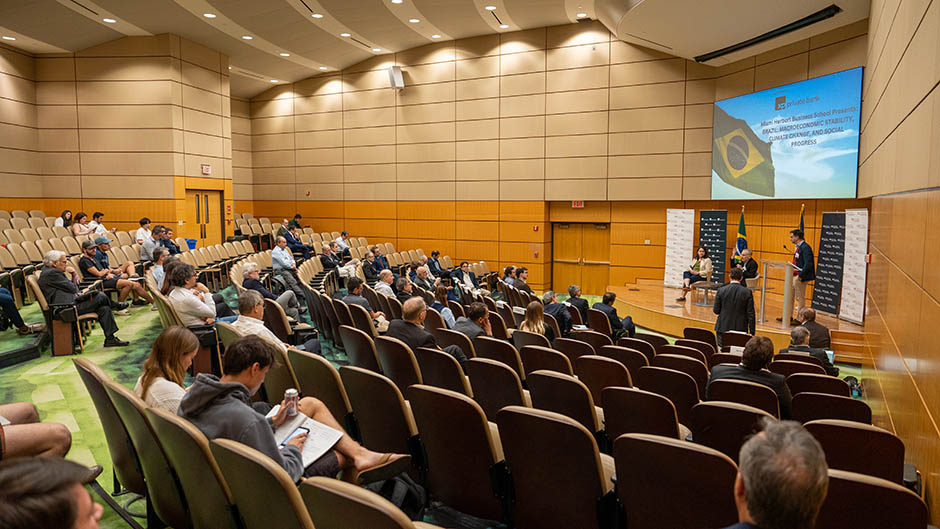Experts on Brazilian macroeconomics converged on the University of Miami Patti and Allan Herbert Business School last week for a highly detailed examination of Brazil’s fiscal health.
Sponsored by XP Private Bank, a Brazilian investment management company, and by Miami Herbert, 14 economists shared their views and fielded questions during “Brazil: Coping With Macro Volatility Amidst Environmental and Social Challenges.”
The daylong event provided a comprehensive economic snapshot of Brazil, whose $2.17 trillion gross domestic product ranked tenth globally in 2023, according to World Bank statistics. The fifth-largest country in the world, thanks to its 3.286-million-mile land mass, Brazil’s 209.5 million citizens place the country sixth in population after China, India, the United States, Indonesia, and Pakistan.
During the event, it became apparent that while Brazil’s government needs to cut expenditures dramatically and boost revenue collection, its economy has displayed encouraging resilience.
“Last year, at the beginning of the year, the markets were projecting quite low economic growth,” said World Bank official Marcos V. Chiliatto Leite. “I believe it was around 1.5 percent growth. And in the end, Brazil grew 3.5 percent, which is quite a positive result. It is among the highest rates of growth of the G20 economies.
“For this year, I think everyone will expect a growth level that is below last year,” predicted Leite, a Brazilian national who represents Brazil, Colombia, the Dominican Republic, Ecuador, and several other Latin countries in his role as a World Bank Group executive director. “Monetary policy tightening is already showing an impact in cooling labor markets and services.”
Despite that, Leite looked forward to appreciable 2025 contributions from Brazil’s agriculture and oil sectors.
Caio Megale, a chief economist with XP Securities, said that “in terms of macroeconomics, the fiscal situation is probably one of the key difficulties that Brazil has. In 2015, we got overleveraged, (had) a very deep recession, and then revenues collapsed.
“Then we entered a new period where we said, we need to do something about expenditures,” Megale said. “Last year, we had a record high in revenues, but expenditures are growing at a faster pace post-COVID. It’s like a machine of increasing expenditures that has to stop eventually. The task will be delivered to the next president because 2026 is an election year.”
It’s impossible to accurately assess Brazil’s economic health without looking at the costs and benefits of Amazon rainforest reforestation, which was addressed by Inter-American Bank official Tatiana Schor. She primarily focused on the sprawling Amazonia biome, “a very interesting and very complex place” that covers parts of Brazil, as well as Suriname, French Guiana, Peru, Bolivia, Colombia, and Venezuela.
“Amazonia is very urbanized,” Schor said, noting that the Brazilian city of 2.2 million people she lives in, Manaus, is located in Amazonia, as is Belém, a Brazilian metropolitan area with 1.8 million citizens. “All of the eight Amazonia countries have the same problem: the worst statistics for everything – cancer, education, violence, sanitation.”
If Brazil can get a handle on eradicating poverty in Amazonia, along with achieving net negative deforestation by 2050, Schor said that could position Amazonia to make significant contributions to Brazil’s GDP.

